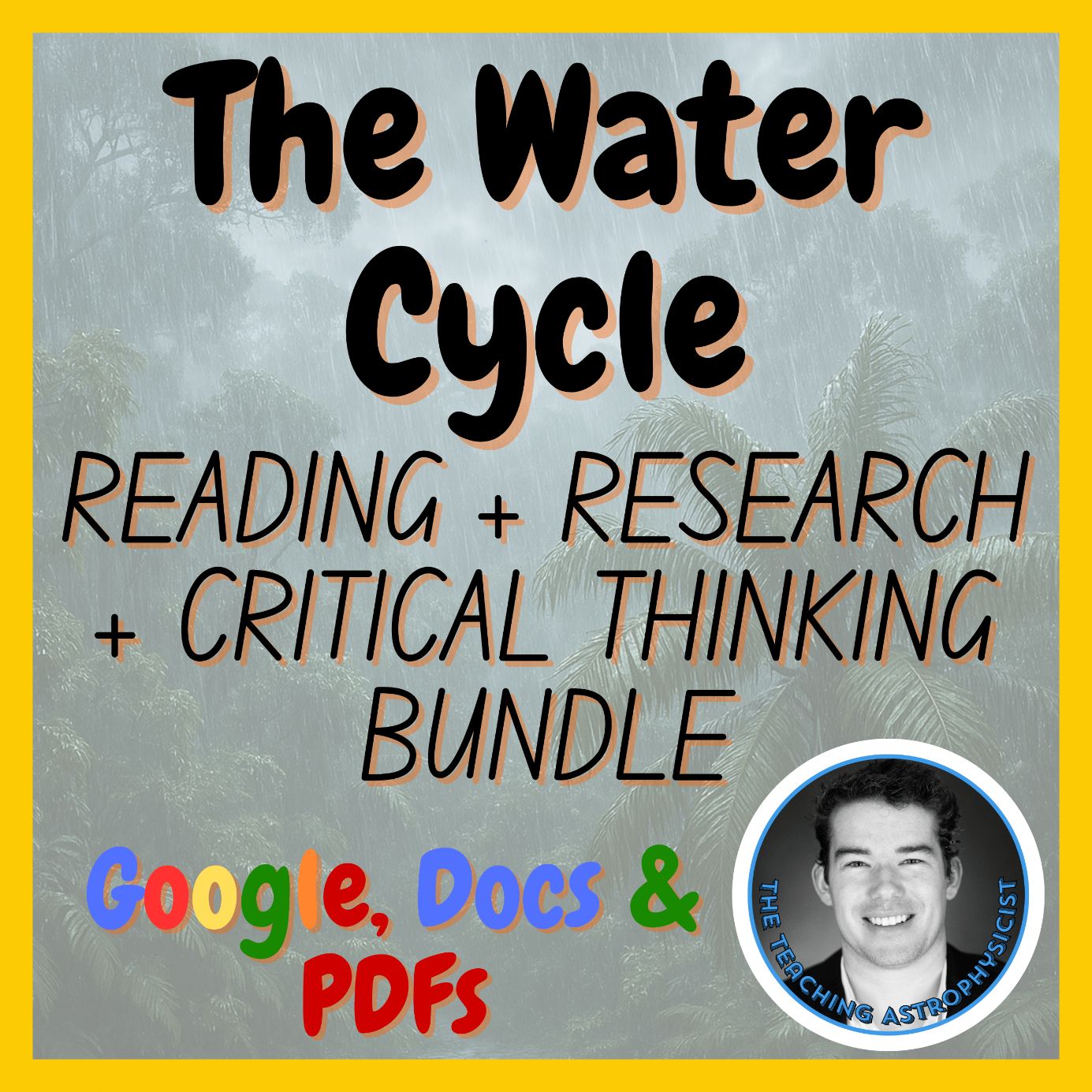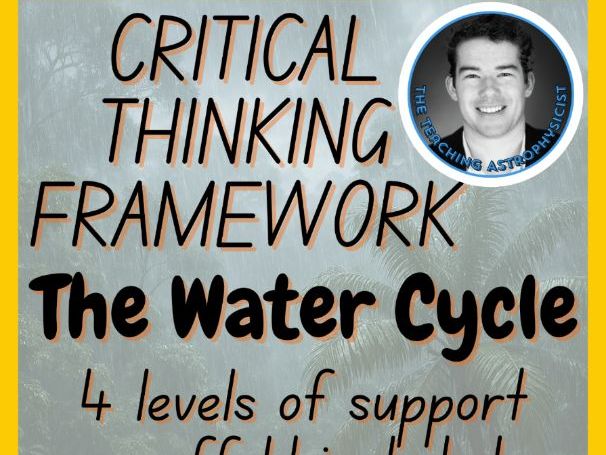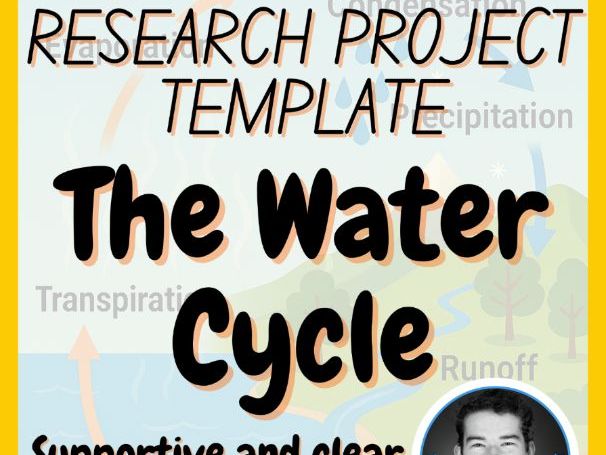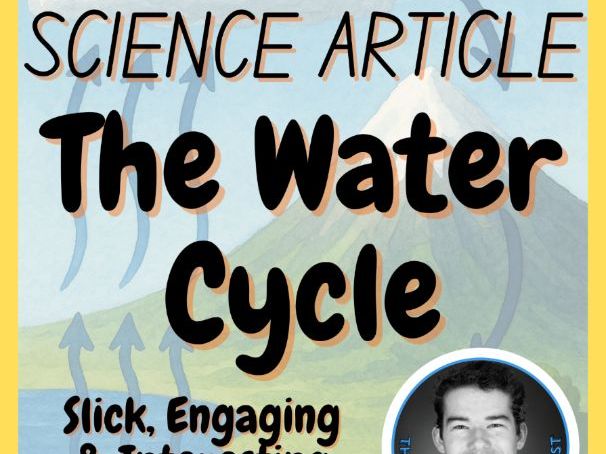Combining a science reading passage with questions, a research project template (webquest), and a critical thinking framework with 4 levels of supportive scaffold creates a multifaceted learning bundle that significantly benefits students studying the water cycle. The reading passage provides a solid base of fundamental concepts and vocabulary, prompting students to actively engage with the material through targeted questions that enhance comprehension and retention. The water cycle research project template guides learners in exploring real-world applications and current data related to the water cycle, fostering independent inquiry and practical understanding of how water moves through our environment. Finally, the structured water cycle critical thinking framework gradually builds students’ analytical and evaluative skills, offering step-by-step support that transforms basic knowledge into deeper insights. Together, these three resources empower students to make connections between scientific theory and everyday environmental challenges, promoting a more robust and lasting grasp of the water cycle. With this in mind, let’s engage with this excellent learning and teaching resource.
This water cycle research project template (webquest) provides the perfect grab and go, print and provide resource that can help your students learn all about the water cycle. For digital, you can provide a Google doc copy for ease of submission or a Microsoft word version as well. In this water cycle research project template (webquest) with questions to check comprehension and inspire scientific thinking. It gives a rich and supportive framework that can be tweaked as needed for students to support differentiation.
This water cycle research project template includes:
- Space for a one paragraph summary (that links to the 2 page science article also available on this topic - but does not have to).
- Students should produce a mathematical connection, an engineering / technology connection, 2 interesting facts / stats.
- 5 glossary terms they should fill in with their own words (which also links to the science article also available)
- 3 thought provoking questions (ie: critical thinking questions) they must answer.
- Finally, each template has 3 alternative thought provoking questions for younger students and 3 other alternative harder questions to extend high flying or older students. Giving you a total of 9 possible thought provoking questions that could be used with students to enhance their research and critical thinking.
- Further, I have added a 1 page - 20 point rubric to be used for either self-assessment or teacher assessment as you deem fit. I hope it helps support the learning even further!
The set of resources are some of my best work and I am proud to share it with you.
The water cycle science article provides the perfect grab and go, print and provide resource that can supplement lessons. It is a water cycle article with questions to check comprehension and inspire scientific thinking. I am very proud of this series of science articles and they are rich with information and wonder at the majesty of science. Each science article includes a fun fact(s) to add to the knowledge gained from this article. Formatted in an easy to read and digest manner, each paragraph is numbered to help with referencing and each question answer has a paragraph reference number to point to the specific information (where applicable).
THESE RESOURCES CAN BE USED SO MANY WAYS:
- Useful for substitute (sub) teaching
- To extend students
- To increase scientific literacy and research skills in your class
- Great as a lesson filler when class goes too fast and you need a long running task
- To inspire students on a particular topic
- As a scaffold to support students who need support on research skills and can use a framework
- To enhance critical thinking when doing research and making a relevant and interesting output
- To enhance students ability to express ideas and synthesis knowledge
- To increase scientific literacy in your class
- A weekly reading / research task
WHAT’S INCLUDED:
Water Cycle Science Research Project Template
- 7 page Google doc image - textboxes teacher version with supporting appendix items
- 3 page Google doc image - textboxes student version with room to fill in answers (text boxes)
- 7 page Word doc image - textboxes teacher version with supporting appendix items
- 3 page Word doc image - textboxes student version with room to fill in answers (text boxes)
- 7 page PDF teacher version with supporting appendix items
- 3 page PDF student version with space to fill in answers
- 1 page 20 point rubric for self or teacher assessment in all three - Google doc, Word doc and PDF form
Water Cycle Science Article
- 3 page Word doc image - textboxes teacher version with answers
- 2 page Word doc image - textboxes student version with room to fill in answers (text boxes)
- 3 page PDF teacher version with answers
- 2 page PDF student version without answers (but space left to do so)
- 3 page Google doc image - textboxes teacher version with answers
- 2 page Google doc image - textboxes student version with room to fill answers (text boxes)
WHAT’S INCLUDED IN THIS WATER CYCLE CRITICAL THINKING FRAMEWORK:
- 4 page completed exemplar for the scaffold with why questions (including suggested key questions / problems to be explored)
- 3 page complete scaffold version in PDF, Microsoft Doc & Google Doc form + now with Editable Google Slides form that has why questions in addition to suggest 9 steps providing maximum support for learners about the water cycle
- 3 page ladder version in PDF, Microsoft Doc & Google Doc form that has the 9 steps for a complete exploration into the water cycle
- 2 page step-ladder version in PDF, Microsoft Doc & Google Doc form that has 6 steps for supportive foray into the water cycle
- 1 page step version in PDF, Microsoft Doc & Google Doc form that has 3 steps for an initial foray into the water cycle
- 3 page implementation guide to support how to use this critical thinking framework practically in the classroom
Please note: That the Doc versions are images with editable text boxes overlayed on top and this is the most effective way to keep the article sleek and well-designed and also that students cannot change things significantly.
Something went wrong, please try again later.
This resource hasn't been reviewed yet
To ensure quality for our reviews, only customers who have purchased this resource can review it
to let us know if it violates our terms and conditions.
Our customer service team will review your report and will be in touch.



